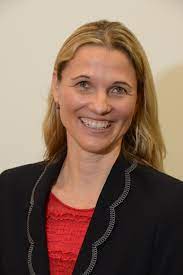
Suzanne Becken
Regenerative tourism or leaving a place better than you found it seeks to balance the economics of tourism with the well-being of its natural resources and communities.
The key difference between this and sustainable tourism is that while the latter typically aims to reduce the social and environmental impacts associated with travel, it often fails to consider to actively ‘give back’ and contribute to a destination.
There are different approaches in tourism – ecotourism, responsible tourism, ethical tourism or sustainable tourism. Sustainable tourism has been the most widely accepted concept, and it is firmly linked to the UN Sustainable Development Goals. In practice, however, sustainable tourism initiatives have often been based on technological approaches with the aim to maximize efficiency.
For example, a hotel might install a new air conditioning chiller to save energy, or a business introduces recycling measures to deliver on some environmental performance indicators. The focus is quite singular and restricted to the boundaries of one organization. It follows the principle of minimizing harm or negative impact, and most tourism certification schemes take this approach. Of course, if everyone progressed on sustainable tourism, we would improve collectively towards better outcomes.
It is now understood that the reductionist approach is not enough. The pressures of the past five years in particular have shown that tourism growth, even with some ‘sustainable management’ can result in more ‘bad than good’, at least in many of the popular destinations. A more profound philosophy and guiding principles are required. The very basic underpinning of regenerative tourism is that it is understood to occur within an ecosystem of natural, social and cultural elements and interactions. Taking a holistic approach is essential in understanding positive effects (e.g. healing) as well as unintended consequences (e.g. degradation). Everything is connected, and tourism that does not respect or understand feedback loops in the system in which it operates will ultimately erode capital – and with that the wellbeing and health of the system.
Regenerative tourism, in contrast, is designed in a way that builds capital and ‘gives back’ to the land and people. This can happen in multiple ways – but system health needs to be the ultimate outcome with the goal of operating in a way that does not compromise the opportunities of future generations (i.e. following the 1987 Brundtland Report).
Much of what we can see ‘on the ground’ is driven by leading businesses who are passionate about the place in which they operate. It is important that policy supports these efforts, but also ensures that the ‘lagging end’ is regulated or incentivized to increase their efforts. Ultimately, though, regenerative tourism happens at the community level and needs to go beyond such top-down regulatory interventions. Empowering communities to make decisions, providing know-how and sound information (including data on tourism), and fostering cross-industry networks might be avenues to lead to more regenerative outcomes



